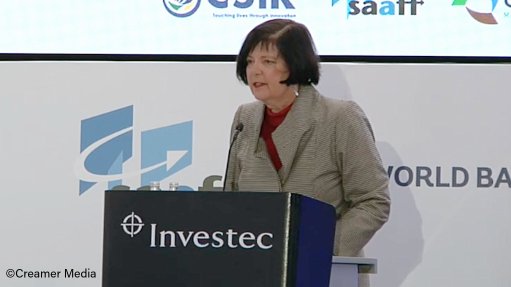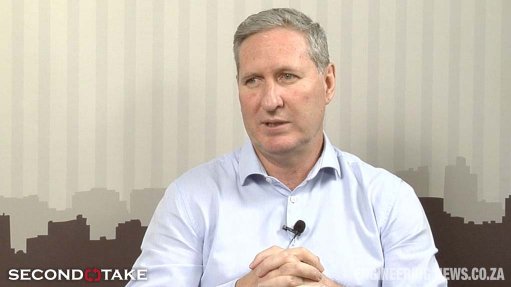African innovation
I bet my bottom rand that many people on these shores are not as informed about Togo as they are about, say, Tibet – this despite the fact that South Africa and Togo are on the same continent.
Usually, the West African nation features in local media reports only when citizens take to the streets to protest against their President, Faure Gnassingbe, which has happened quite frequently in recent times.
But Togo has good stories to tell as well. One such story involves a former geographer who, with the assistance of a local technology incubator called WoeLab, invented a three- dimensional (3D) printing contraption using only electronic waste scrounged from landfill sites. Afate Gnikou, described by journalists as a do-it-yourself man, says he aims to use the printer – first developed in 2013 – to improve the lives of his fellow Togolese by printing objects such as medical prosthesis.
By the end of 2017, Gnikou and his colleagues at WoeLab had built 20 made-from-electronic-waste 3D printers – and other laboratories on the continent are following suit. This will, no doubt, go a long way towards tackling an emerging crisis – mounting dumps of mostly imported old cellphones, computers and television sets that are not only an eyesore but also pose a health hazard when they are burnt, as they produce deleterious gases.
Gnikou and Co are not the only inventors who are putting Africa on the world map. In December, a Ugandan-developed biomedical smart jacket that diagnoses pneumonia in children aged five and below much faster than a doctor was ranked by news organisation CNN among the 12 African innovations that are poised to change the world. It was also named the winning invention in the 2017 edition of the Pitch@Palace Africa contest, in the UK. Held yearly, the contest affords African entrepreneurs an opportunity to pitch to potential investors and mentors.
Operating the biomedical smart jacket is very simple: after the sick child has put it on and a health worker has activated it, it tracks the key signs of pneumonia, displaying the results after only three minutes, compared with the five or more minutes that a doctor using a stethoscope would take. It also eliminates human error. Thus, the device’s widespread adoption should significantly reduce the estimated 750 000 pneumonia- related child deaths that occur in Africa each year, many of which are attributable to misdiagnosis.
In the Democratic Republic of Congo’s capital of Kinshasa, which, like many cities around the world, faces a severe traffic congestion problem, humanlike robots have been used for about five years now to direct traffic and ease oft-occurring logjams. The giant robots have built-in video cameras that detect and record traffic flow, reporting this information to a central computer centre, where it is analysed and used to direct traffic. Violations of traffic rules are also reported to the centre.
The first two robots, installed in 2013, were designed by engineers from the Kinshasa Higher Institute for Applied Technique. Three more, designed by an association of female engineers called Women’s Technology, were added last year.
The humanlike robots feature red lights on their front and back, as well as green lights on their arms, and rotate to direct traffic, ‘taking’ their instructions from the central computer centre.
By many accounts, the ‘robocops’, which are solar powered, have proved to be immensely popular with Kinshasa road users. One taxi driver told French news agency AFP in 2017: “There are certain drivers who don’t respect the traffic police. But with the robots, it is different. We should respect the robots.”
South Africa, of course, ranks highly in the innovation stakes. After all, ours is the country that gave the world the CAT scan, the Kreepy Krauly swimming pool vacuum cleaner, Pratley’s putty, the speed gun (which accurately measures the speed and angles of speeding objects like cricket and tennis balls), the smart-lock safety syringe and lots more. It was also South Africans, Chris Banard and Selig Percy Amoils, who performed the first heart transplant and introduced a new method of cataract surgery respectively.
So, we Africans are an innovative lot.
Comments
Press Office
Announcements
What's On
Subscribe to improve your user experience...
Option 1 (equivalent of R125 a month):
Receive a weekly copy of Creamer Media's Engineering News & Mining Weekly magazine
(print copy for those in South Africa and e-magazine for those outside of South Africa)
Receive daily email newsletters
Access to full search results
Access archive of magazine back copies
Access to Projects in Progress
Access to ONE Research Report of your choice in PDF format
Option 2 (equivalent of R375 a month):
All benefits from Option 1
PLUS
Access to Creamer Media's Research Channel Africa for ALL Research Reports, in PDF format, on various industrial and mining sectors
including Electricity; Water; Energy Transition; Hydrogen; Roads, Rail and Ports; Coal; Gold; Platinum; Battery Metals; etc.
Already a subscriber?
Forgotten your password?
Receive weekly copy of Creamer Media's Engineering News & Mining Weekly magazine (print copy for those in South Africa and e-magazine for those outside of South Africa)
➕
Recieve daily email newsletters
➕
Access to full search results
➕
Access archive of magazine back copies
➕
Access to Projects in Progress
➕
Access to ONE Research Report of your choice in PDF format
RESEARCH CHANNEL AFRICA
R4500 (equivalent of R375 a month)
SUBSCRIBEAll benefits from Option 1
➕
Access to Creamer Media's Research Channel Africa for ALL Research Reports on various industrial and mining sectors, in PDF format, including on:
Electricity
➕
Water
➕
Energy Transition
➕
Hydrogen
➕
Roads, Rail and Ports
➕
Coal
➕
Gold
➕
Platinum
➕
Battery Metals
➕
etc.
Receive all benefits from Option 1 or Option 2 delivered to numerous people at your company
➕
Multiple User names and Passwords for simultaneous log-ins
➕
Intranet integration access to all in your organisation

















